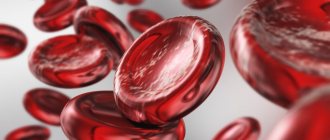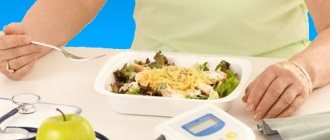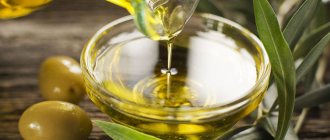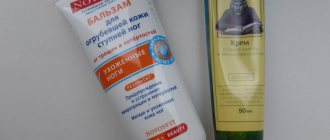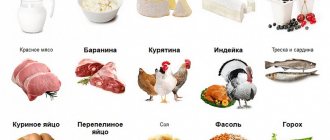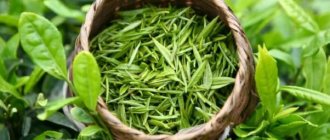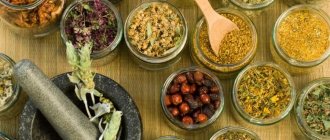Is herbal medicine effective for hypertension?
Although the effectiveness of herbal preparations is limited, some herbs can actually be used to lower blood pressure because they have the following pharmacological effects:
- diuretic effect;
- decrease in total peripheral vascular resistance;
- decrease in heart rate and strength with a drop in ejection fraction;
- normalization of the rheological properties of blood (decrease in the number of atherogenic lipids and glucose in the blood, increase in cholesterol).
- suppression of the activity of the sympathetic nervous system.
- changes in the course of biochemical processes in the brain.
The effect on the body is always individual and depends on the specific plant.
What is blood pressure
As blood passes through the vessels, it puts pressure on their walls. Most often, blood pressure is measured in vessels called arteries. That's why pressure is called arterial pressure.
Blood pressure is assessed by two indicators - at the moments of maximum contraction and relaxation of the heart muscle. Normally, it corresponds to a certain physiological range of strength.
But when blood vessels narrow and the heart fails, the pressure becomes higher.
Hypertension, from Greek. hyper – over, tonia – tone, – excessive increase in blood pressure.
Causes of hypertension
- Psycho-emotional tension, stress;
- Hereditary predisposition;
- Sedentary lifestyle;
- Chronic diseases (diabetes mellitus, pyelonephritis, etc.);
- Excess body weight;
- Bad habits.
High blood pressure is lowered with the help of medications that have hypotensive (hypo - low, tens - tone) properties. Some medicinal plants can have this effect.
Herbal infusions - 3 recipes
There are many herbal infusions and other folk remedies that help lower blood pressure and improve the overall prognosis for hypertension. They can be prepared at home. Below are the most effective and common ones.
Collection No. 1
The following ingredients will be required:
- motherwort herb – 4 tbsp. l.;
- hawthorn berries 1 tbsp. l.;
- mint leaves - 0.5 tbsp. l.;
- strawberry leaves - 1 tbsp. l.;
- dried dried fruit – 1 tbsp. l.;
- dill seeds – 1 tbsp. l.;
- flax seeds – 2 tbsp. l.
The resulting mixture of herbs is placed in a thermos or a glass jar tightly wrapped in wool and filled with 1000 ml of boiling water. The solution must sit for 6 hours. The decoction is consumed 1 glass (200 ml) 30 minutes before meals 3 times a day. Duration of therapy is about 2 months.
Collection No. 2
To prepare, you need to take equal parts of chamomile and calendula flowers, motherwort herb, oregano, string, black currant leaves (can be replaced with fruits), and dill fruits. The resulting dry mixture is thoroughly mixed.
Cooking instructions: 2 tbsp. l. pour 500 ml of hot water and let it brew for about one hour. Use 100-150 ml with 1 tsp. natural honey. You can take no more than 500 ml of solution per day. The duration of treatment is up to 30 days.
Collection No. 3
The following ingredients are required:
- motherwort herb – 4 tsp;
- marsh cudweed (grass) -2 tsp;
- lemon balm leaves - 1 tsp;
- hawthorn fruits – 1 tsp;
- chokeberry fruits – 1 tsp.
All components are poured into 0.5 liters of boiling water and infused in a thermos for 6 to 8 hours.
Before use, the infusion is carefully filtered and taken 150 ml 3 times a day 30-40 minutes before eating. Duration of use – up to 1.5 months.
Collection No. 4 from cudweed and motherwort
To prepare, you need to take 3 parts each of motherwort and marsh cudweed herbs, 2 parts horsetail and wild rosemary herbs, 1 part buckthorn bark. 2 tbsp. l. herbal raw materials are poured with 500 ml of boiling water and simmered over low heat for about 15 minutes.
Then the broth is poured into a dark jar and infused for about 4-5 hours. You should drink 100 ml 3 times a day 45 minutes before meals.
From increased intracranial pressure
Intracranial high pressure is caused by blood stagnation, impaired outflow of cerebrospinal fluid, hemorrhages or tumors.
Characteristic signs of increased intracranial pressure are:
- Morning headaches that worsen in the evening;
- Heaviness in the head;
- Disruption of the vegetative-vascular system. Sweating, pressure surges, near fainting;
- Meteor dependence;
- Lying down aggravates headaches.
- For intracranial hypertension, the use of herbs complements the main therapy. To treat this condition, herbal preparations are used. They may include diuretic plants for the drainage of excess fluid, anti-inflammatory plants for stopping inflammatory processes and other agents, depending on the cause of the disease and symptoms.
To treat this condition, herbal preparations are used.
Intracranial pressure collection:
Ingredients, one teaspoon each:
- valerian or motherwort;
- horsetail or hops;
- sage;
- mint;
- St. John's wort.
- Place in a bowl and pour 400 ml of boiling water.
- Cook in a water bath for half an hour.
- Strain.
- Store in a glass jar in the refrigerator for no more than 5 days.
- Take a few sips for severe headaches or fatigue.
Review of pharmaceutical drugs
There are several hundred herbal remedies for lowering blood pressure on the pharmaceutical market. Will consider several of the most popular representatives.
Health King herbal tea
A long-acting product, the main components of which are the roots of salvia and peony, scrofularia and perennial, green tea and mulberry leaves, magnolia bark, jasmine.
Tea is indicated for lowering blood pressure and strengthening the heart muscle by normalizing metabolism in cardiomyocytes.
Before use, pour 1-2 filter bags with 200 ml of boiling water and let it brew for 3-5 minutes. You can drink 2 glasses a day for 14 days, then a break is required for 10 days. Courses of treatment can be repeated an unlimited number of times.
BP-minus
The drug contains buckwheat inflorescences, marsh cudweed, cherry stalks, ascorbic acid and rutin (vitamin P).
Helps normalize blood pressure, is a means of preventing “jumping” pressure and the development of hypertensive crises.
The dosage regimen is as follows: 1 tablet 2 times a day during meals. Duration of therapy is 14 days. A second course can be repeated after 2 months.
Evalar BIO antihypertensive herbs
The basis of the medicine is black currant leaves, flowers and leaves of hawthorn, chokeberry fruits, lemon balm herb and peppermint leaves. All ingredients are grown on the Altai plantations of the manufacturer.
Regular consumption of tea is recommended to maintain blood pressure levels and prevent vascular accidents. It also helps relieve symptoms of fear and anxiety, and overall calm the body.
To prepare the drink, you need to fill 1 filter bag with 200 ml of boiling water and let it brew for 30 minutes. Take 200 ml 2 times a day (half an hour before meals).
Herbs that reduce intraocular pressure
Intraocular pressure is the pressure of fluid inside the eye. Its increase can be caused by various factors, including heart rhythm and breathing disorders, excessive fluid intake, taking certain medications, etc. Increased intraocular pressure is one of the main causes of the development of glaucoma.
Glaucoma is an eye disease in which the flow of natural fluids inside the eye is disrupted. It creates pressure on the blood vessels of the eyeball. If glaucoma is not treated, vision deteriorates and the optic nerve begins to die.
Collection to reduce intraocular pressure:
Ingredients:
- 3 tbsp. l walnut leaves;
- 2 tsp rosehip flowers;
- a handful of crushed rosehip roots;
- aloe stem 1 cm.
Preparation, consumption:
- Steam in 500 ml of boiling water;
- After an hour, strain;
- Drink 15 ml before meals, three times a day;
- The full course is a month.
Contraindications
Before starting treatment, you must familiarize yourself with the list of contraindications and possible adverse reactions. This will avoid adverse consequences. It is also advisable to consult a doctor. Only a specialist can adequately assess the general state of health and the advisability of prescribing herbal medicine.
If we consider the list of contraindications as a whole (for most plants), it will look like this:
- Individual hypersensitivity to individual components of plant materials. Allergies occur to any plant and are usually expressed in the form of local irritation of the skin and mucous membranes, urticaria. However, it is possible that symptoms of anaphylactic shock or Quincke's edema may appear.
- Arterial hypotension (including orthostatic). An additional decrease in blood pressure can lead to depression of consciousness (stupor, stupor, coma) and disorders of the blood supply to organs.
- Peptic ulcer of the stomach and duodenum. Acute infectious diseases of the gastrointestinal tract. Most plants reduce platelet aggregation and coagulation and promote “breakthrough of the bicarbonate barrier” of the gastric mucosa. As a result, life-threatening bleeding may develop.
- Pathologies of the vascular bed with a high risk of the formation of thrombotic masses (varicose veins of the lower extremities, thromboangiitis obliterans, hemorrhoids).
- Any deviations in hemostasis that occur as a result of hypocoagulation (leukemia, thrombophilia).
- Diseases of the liver and kidneys with symptoms of functional failure. Slow elimination of plant components from the body is fraught with intoxication.
- Arrhythmias (AV block, bundle branch block, sinus bradycardia, pacemaker displacement).
When using drugs together with other medications that have an antihypertensive effect, consultation with a specialist is necessary.
5 more tips
Treatment of arterial hypertension should always have a comprehensive approach. To increase the effectiveness of herbal medicine, the following recommendations should be followed:
- To give up smoking. Cigarette smoke is one of the key risk factors for the development of atherosclerosis and coronary heart disease. After inhaling toxic substances twice, a sharp jump in blood pressure is observed, which lasts for 15 minutes.
- Loss of body weight. Hypertension is extremely closely related to excess weight, the reduction of which by just 1 kg can reduce the level of systolic blood pressure by 2-4 mm. rt. Art., and diastolic by 1-2 mm. rt. Art.
- Quitting alcohol. With a total consumption of pure ethanol per week of more than 140 g for men and 80 g for women, the risk of developing a stroke (mainly hemorrhagic) increases by more than 2 times.
- Frequent physical activity. It is necessary to train 3-5 times a week. It is advisable to give preference to outdoor activities (coniferous forests, country parks, etc.). To reduce the risk of fatal complications and death from cardiovascular disease, patients with hypertension are recommended to engage in exercises such as walking, jogging, swimming, and cycling for at least 30 minutes a day.
- Reducing salt intake. The proportion of sodium chloride in the diet should not exceed 3 g. With excessive amounts, an increase in blood pressure and the frequent development of hypertensive crises are observed.
The described methods of non-drug treatment can slightly reduce blood pressure, increase the effectiveness of herbal medicine, and reduce the need for antihypertensive drugs. Changing your lifestyle is the main way to prevent cardiovascular diseases!
